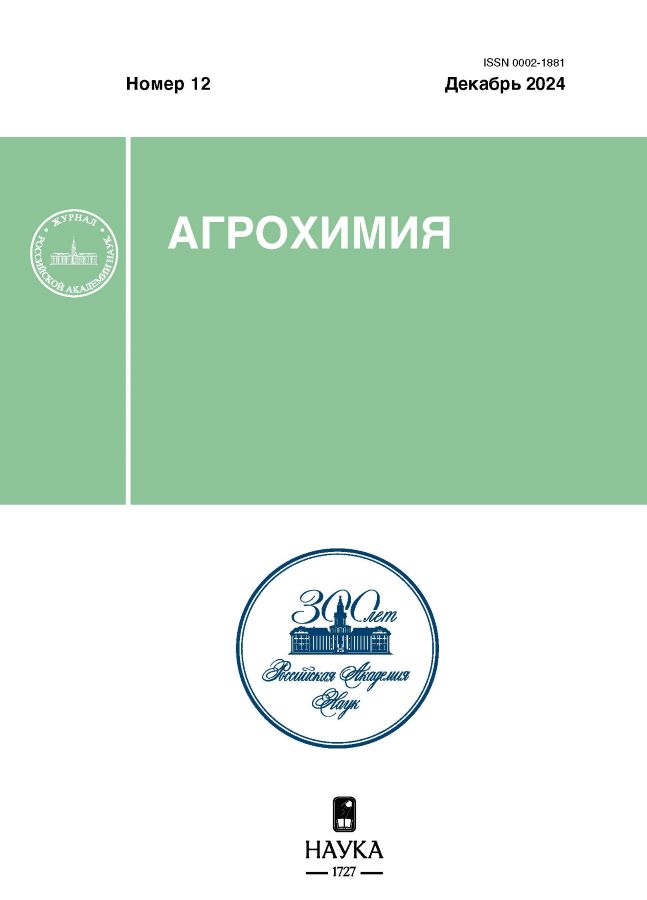Evaluation of the effectiveness of biological fungicides in various sunflower protection systems
- 作者: Lysov A.K.1, Naumova N.I.1, Morozov D.O.1, Bukreev V.V.1
-
隶属关系:
- All-Russian Scientific Research Institute of Plant Protection
- 期: 编号 12 (2024)
- 页面: 36-42
- 栏目: Experimental Articles. Pesticides
- URL: https://ter-arkhiv.ru/0002-1881/article/view/647246
- DOI: https://doi.org/10.31857/S0002188124120052
- EDN: https://elibrary.ru/vwhyhq
- ID: 647246
如何引用文章
详细
The effectiveness of sunflower protection against septoria was studied in 3 protection systems: chemical, integrated and biologized. Each system had 2 repetitions, in one of them the soil biological fungicide Sternifag, SP (Trichoderma harzianum, strain VKM F-4099D, 1010 CFU/g) was introduced in autumn. The study was conducted in 2021 and 2022 at the Agrobiotechnology field in the Shebekinsky district of the Belgorod region. Biologics were used in integrated and biologized protection systems. In particular, the biological preparation Alirin-B, Zh was used in the biologized protection system. It has been experimentally established that during the autumn application of the soil biological fungicide Sternifag, SP, in all variants of protection systems, an increase in the efficiency of treatments and sunflower yields was noted. It was also found that the studied biological preparations had a growth-stimulating effect on the vegetative organs of plants, including the root system. An economic assessment of 3 sunflower protection systems showed that the average yield over 2 years was higher in all variants when applying Sternifag, SP. The highest yield was obtained with an integrated protection system of 39.3 c/ha. Due to the high costs of drugs, the profitability in the chemical system was in both replications less than other options – 215 and 286%. In the biologized system, profitability was the highest – 536 and 618%, this was due to the cost of biological drugs, which were 2 times less. Thus, it is recommended to introduce integrated and biologized sunflower protection systems, which will contribute not only to reducing the cost of protective measures, but also to reducing the pesticide burden on agroecosystems and improving the quality of finished products through the use of biological pesticides.
全文:
作者简介
A. Lysov
All-Russian Scientific Research Institute of Plant Protection
编辑信件的主要联系方式.
Email: lysov4949@yandex.ru
俄罗斯联邦, shosse Podbelskogo 3, St.Petersburg–Pushkin 196608
N. Naumova
All-Russian Scientific Research Institute of Plant Protection
Email: lysov4949@yandex.ru
俄罗斯联邦, shosse Podbelskogo 3, St.Petersburg–Pushkin 196608
D. Morozov
All-Russian Scientific Research Institute of Plant Protection
Email: lysov4949@yandex.ru
俄罗斯联邦, shosse Podbelskogo 3, St.Petersburg–Pushkin 196608
V. Bukreev
All-Russian Scientific Research Institute of Plant Protection
Email: lysov4949@yandex.ru
俄罗斯联邦, shosse Podbelskogo 3, St.Petersburg–Pushkin 196608
参考
- Бухонова Ю.В., Михина Н.Г. Мониторинг вредителей и болезней подсолнечника // Защита и карантин раст. 2023. № 1. С. 19–22. doi: 10.47528/1026-8634_2023_1_19
- Лаптиев А.Б., Мальцев В.К. Эффективность и безопасность пестицидов в защите подсолнечника от вредных организмов // Агрохимия. 2023. № 11. С. 63–70. doi: 10.31857/S0002188123110078
- Высоцкая Е.А., Крекотень Б.А. Оптимизация биоресурсного потенциала подсолнечника с использованием в технологии возделывания биологически активных препаратов // Вестн. ВоронежГАУ. 2017. № 1(52). С. 20–25. doi: 10.17238/issn2071-2243.2017.1.20
- Якуткин В.И., Саулич М.И. Фитосанитарные риски болезней и заразихи в ареалах подсолнечника России, Украины, Молдавии и Казахстана // Вестн. защиты раст. 2016. № 2(88). С. 15–21.
- Макаров М.Р. Технология возделывания подсолнечника // Совр. научн. исслед. и инновации. 2021. № 12 [Электр. ресурс]. https://web.snauka.ru/issues/2021/12/97200 (дата обращения: 11.01.2024).
- Лукомец В.М., Семеренко С.А., Пивень В.Т., Бушнева Н.А., Влияние основных агротехнических приемов на развитие болезней и сорняков в посевах подсолнечника // Защита и карантин раст. 2020. № 10. С. 30–33. doi: 10.47528/10268634_2020_10_30
- Михайликова В.В., Стребкова Н.С., Живых А.В. Биометод в цифрах // Защита и карантин раст. 2022. № 11. С. 39–40. doi: 10.47528/1026-8634_2022_11_39
- Павлюшин В.А., Новикова И.И., Бойкова И.В. Микробиологическая защита растений в технологиях фитосанитарной оптимизации агроэкосистем: теория и практика (обзор) // Сел.-хоз. биол. 2020. Т. 55. № 3. С. 421–438. DOI: 10.15389 /agrobiology.2020.3.421rus
- Доспехов Б.А. Методика полевого опыта. М.: Колос, 1968. 355 с.
- Методические указания по регистрационным испытаниям инсектицидов, акарицидов, моллюскоцидов и родентицидов в сельском хозяйстве. СПб., 2009. 321 с.
- Государственный реестр селекционных достижений, допущенных к использованию. Т. 1. (Электр. ресурс). Реестр селекционных достижений (gossortrf.ru).
- Методические указания по регистрационным испытаниям фунгицидов в сельском хозяйстве. СПб., 2009. 378 с.
- Список пестицидов и агрохимикатов, разрешенных к применению на территории РФ. М., 2021. 826 с.
补充文件









